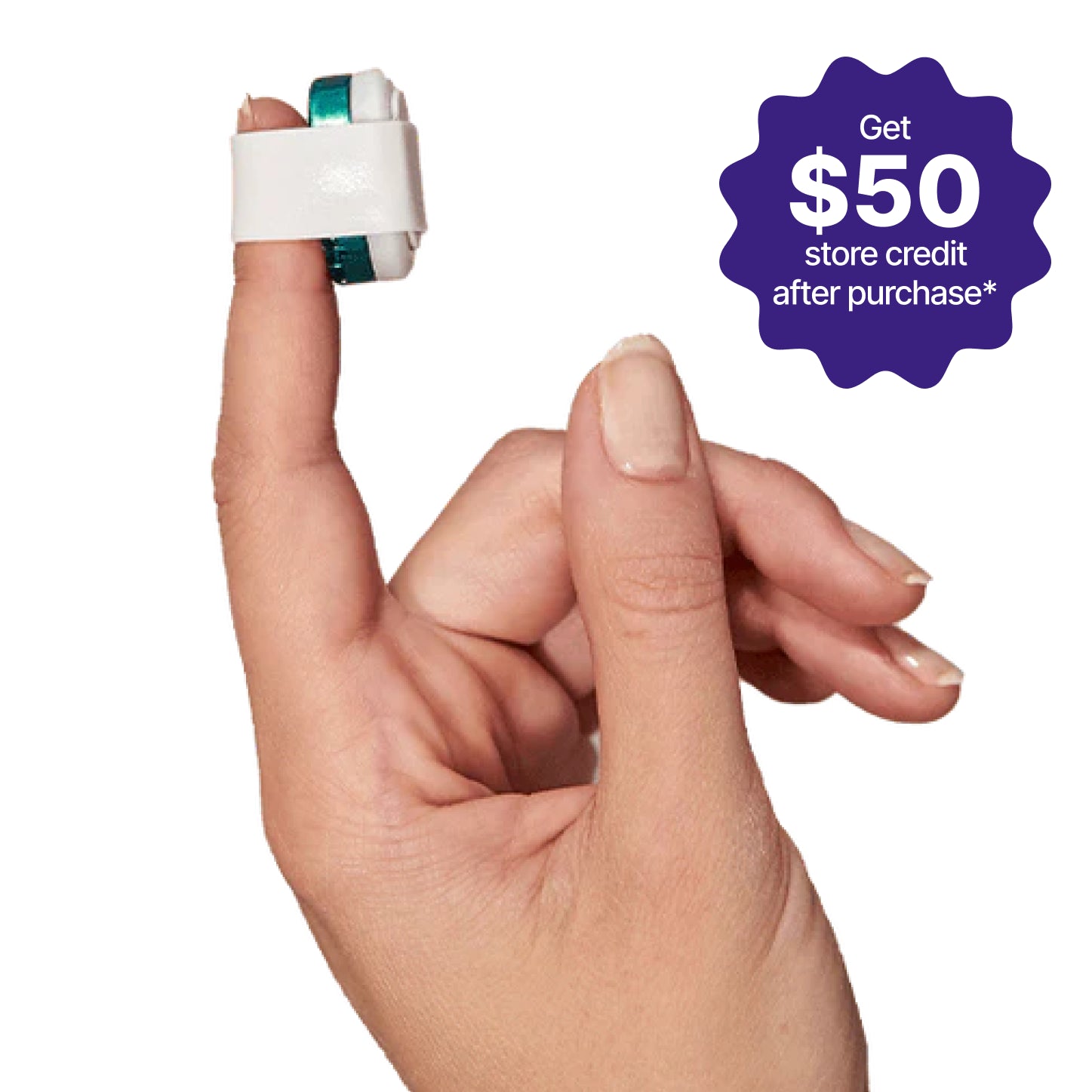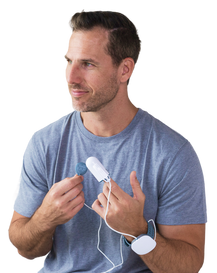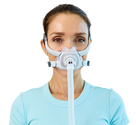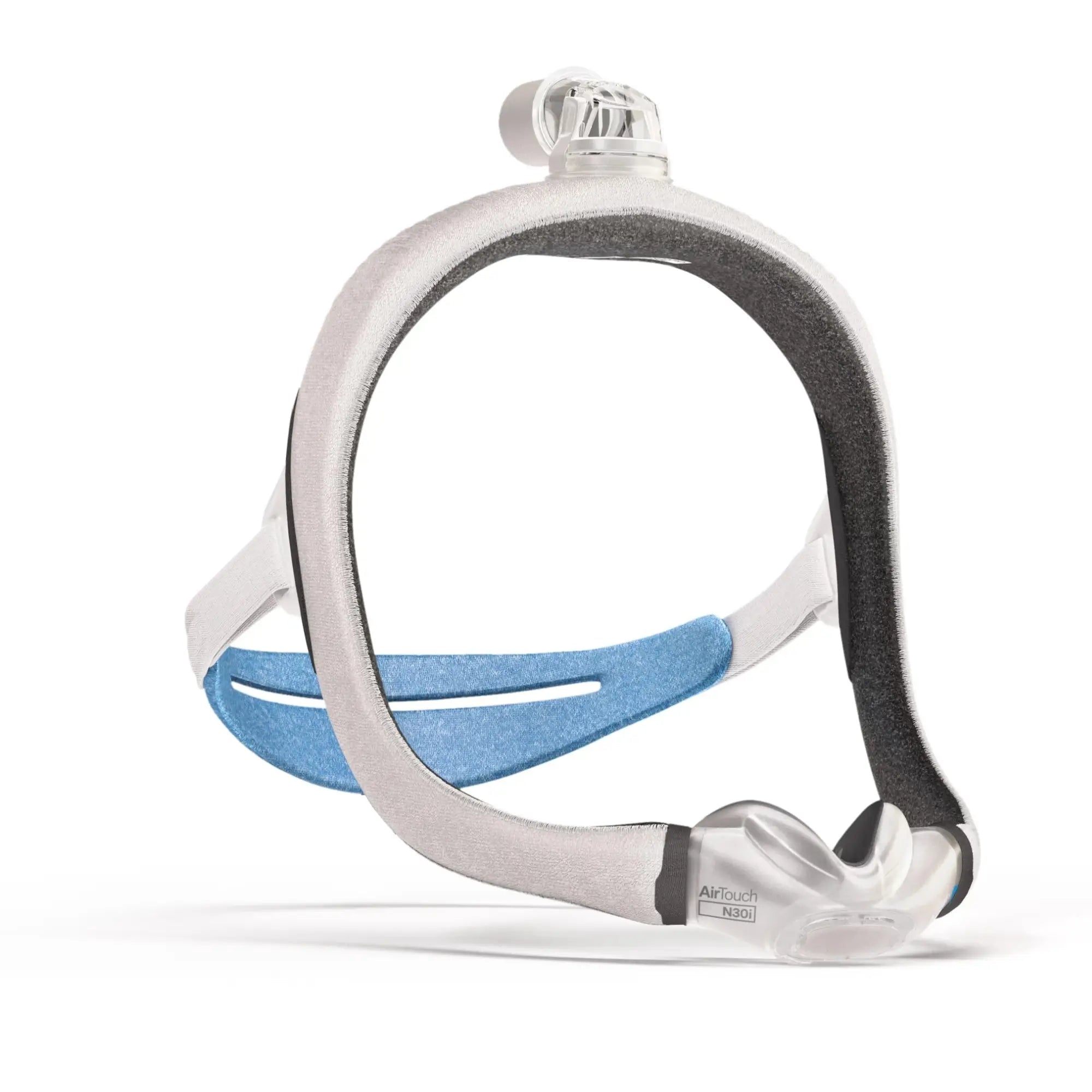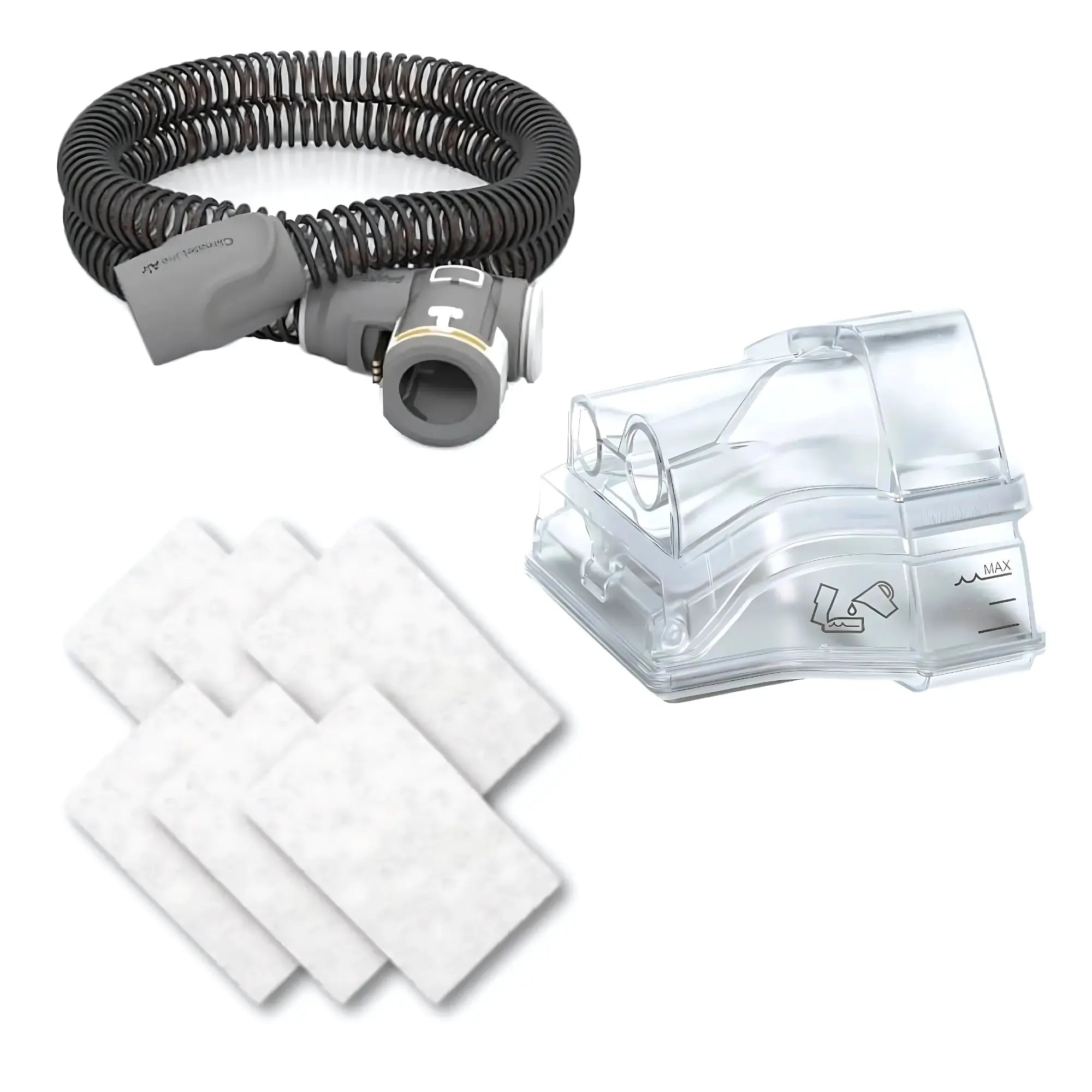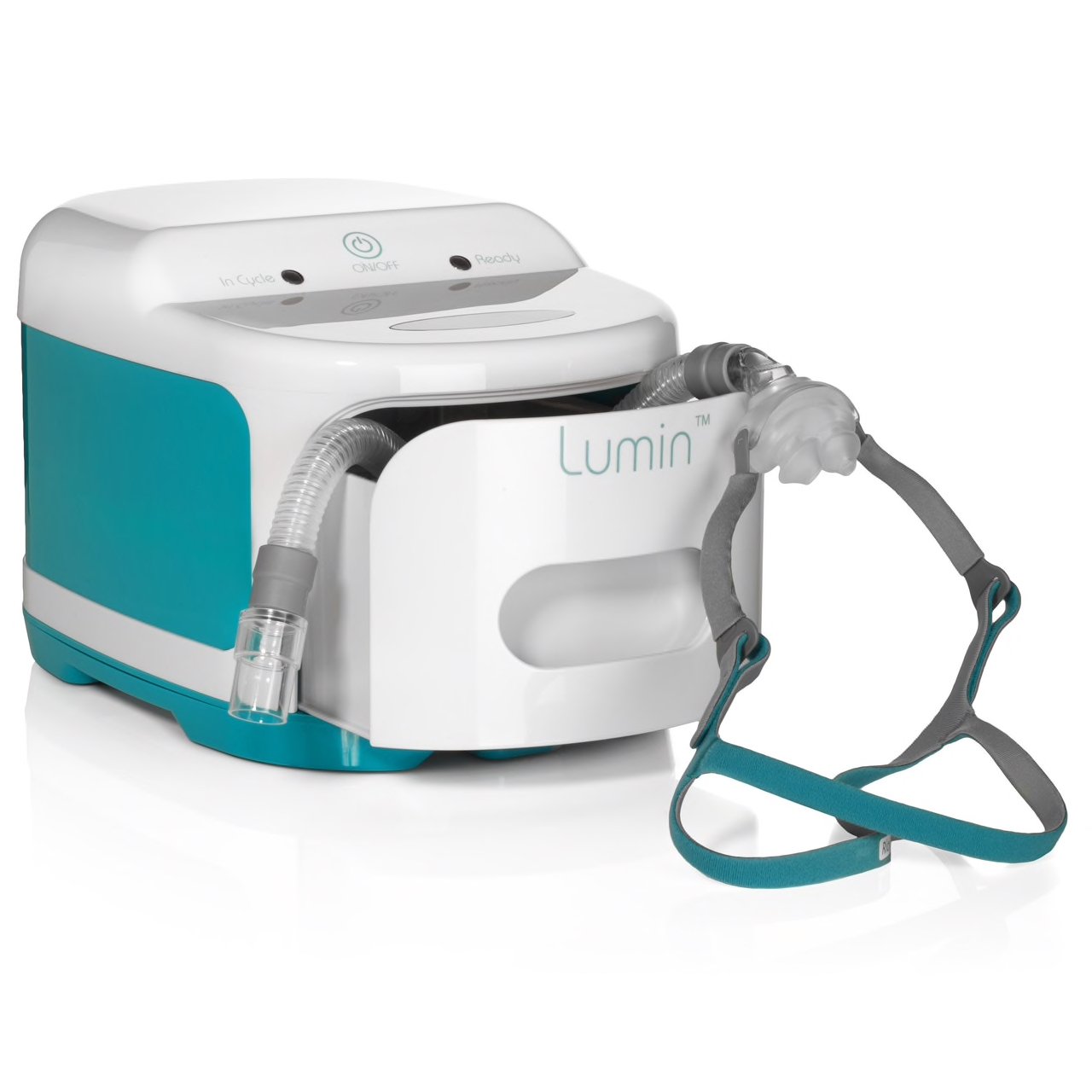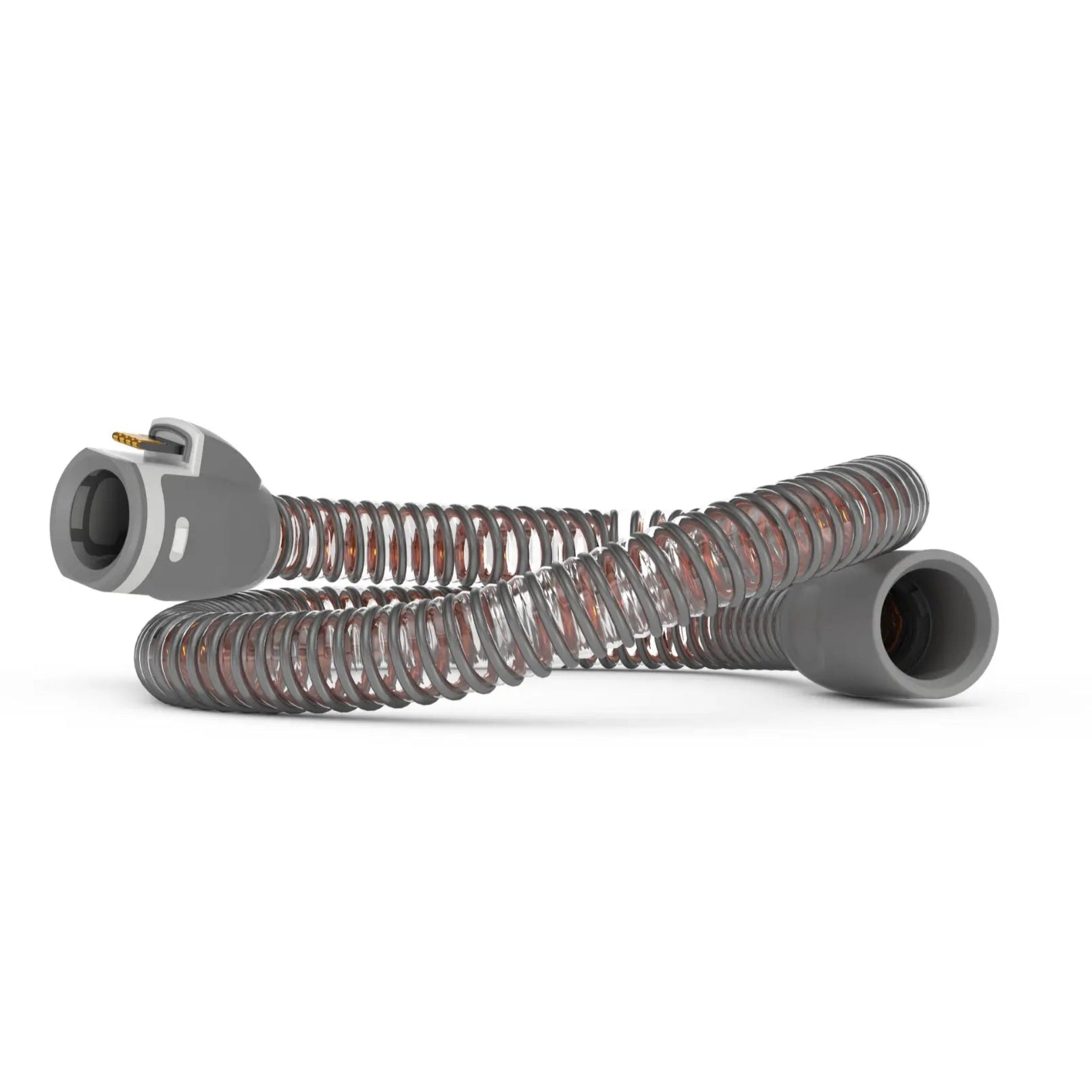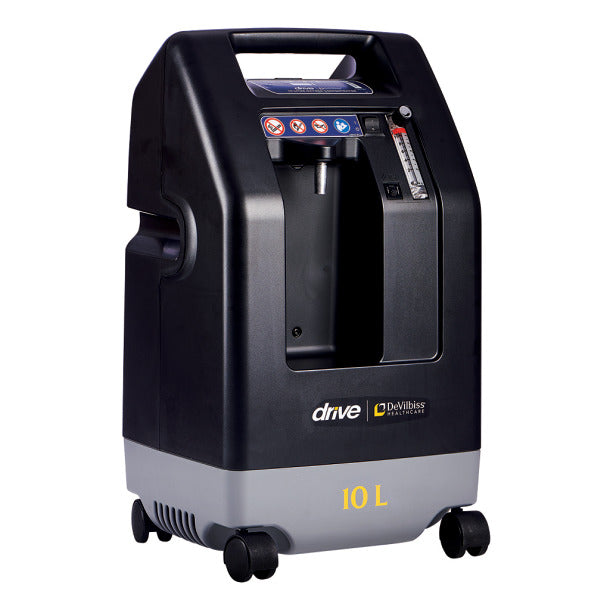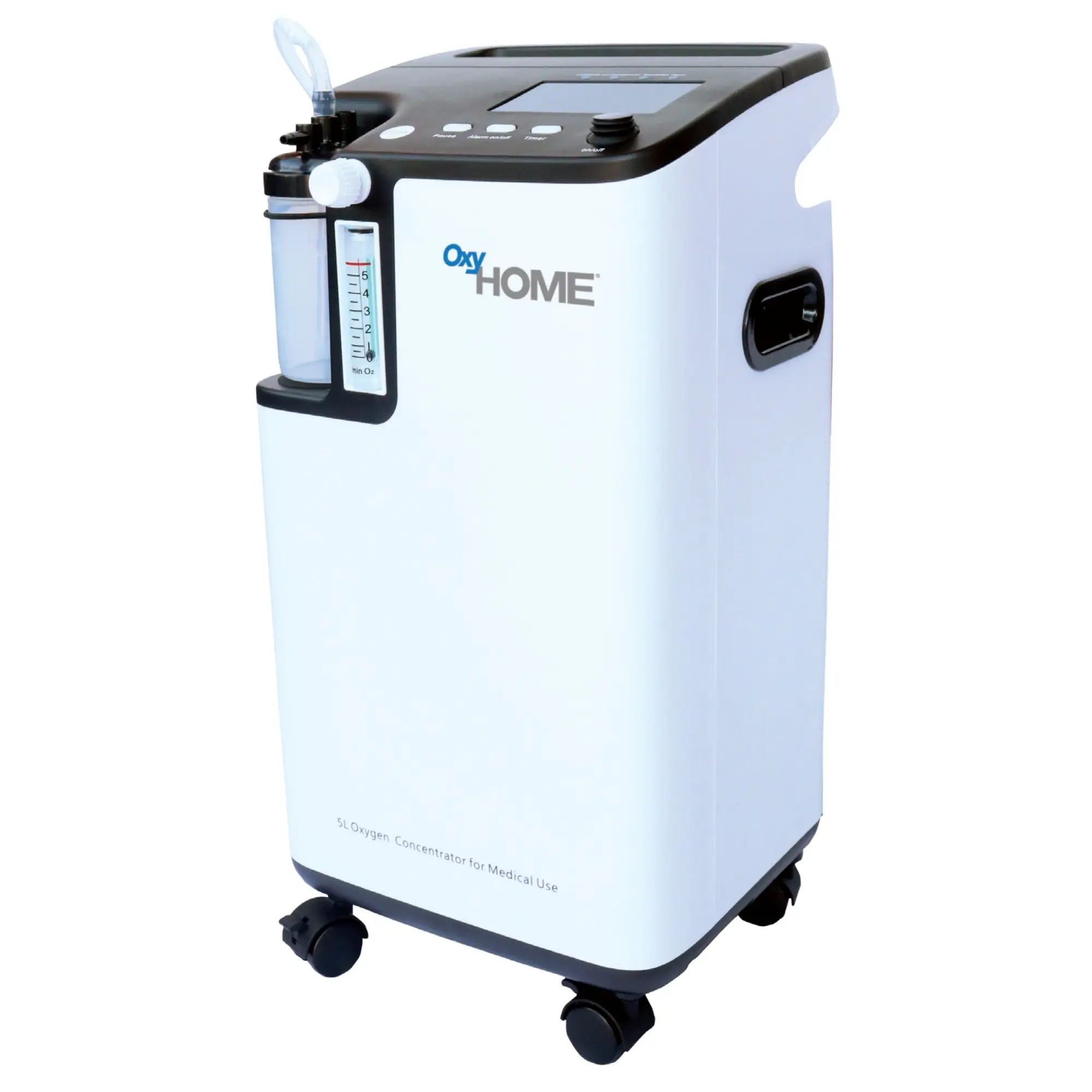CPAP therapy is the most common form of treatment for obstructive sleep apnea (OSA).
A CPAP machine delivers pressurized air to your throat through your nostrils, preventing your airways from collapsing as you sleep at night. The device consists of three parts: a machine that pressurizes air to your particular pressure needs, a hose to deliver the pressurized air, and a mask or nasal pillows that gently blow the air into your airways. There are several features built-in or available as add-ons for optimal comfort and convenience.
Once you have an obstructive sleep apnea diagnosis, the next step is finding a machine that works best for you. The good news is that there is a wide selection of devices to choose from; the bad news is that finding the right machine can be a little overwhelming with so many different options.
Not to worry, we'll break down the major differences and specifications of two favored machines to help you determine which one is the best option for you.
The selection of your CPAP machine is a crucial step to maximize your therapy, and finding what features work best for your sleep needs is an individual process.
Let's look at the differences between the Philips Respironics DreamStation and the Resmed AirSense 10 to help guide you through your selection process.
Respironics DreamStation vs. ResMed AirSense 10
Sound
This is a big one for both you and your partner. A quiet machine is essential for peaceful night sleep. While almost all CPAP machines are made whisper-quiet (below 30 db.), some are quieter than others. The ResMed AirSense™ 10 produces a noise level of 26.6 decibels, while the Respironics DreamStation is slightly lower at 25.8 decibels. Luckily, it's not a deal-breaker since both devices boast a minimal sound level, even when air pressures increase, so comfortable therapy stays undisturbed throughout the night.
Humidifier System
Having air continuously blown into your airways can lead to dry, irritated airways. Humidifiers add moisture to your therapy air preventing these issues.
The AirSense™ 10 comes with a built-in humidifier; it works with ResMed's new HumidAir™ heated humidifier and ClimateLineAir™ heated tube for optimal temperature and humidity levels.
The DreamStation humidifier option comes as a separate, connecting unit. Having a humidifier that can separate from the machine can come in handy for travel when you don't want to take the entire machine.
Portability
Staying consistent with your treatment involves having your CPAP therapy on the go wherever you go. This convenience is important for the compliance of your protocol.
Consider the size of your machine if portability is a relevant factor in your routine. The AirSense™ 10 measures at 4.57 x 10.04 x 5.91 inches. The DreamStation measures at 6.18 L x 7.6 W x 3.3 H inches (without the humidifier attached.) The DreamStation with the humidifier is 11.7 x 7.6 x 3.3 inches.
For consumers searching for the smallest size for travel, the winner is the DreamStation without the humidifier attached. However, if you want the added benefits of humidification, the DreamStation also fits in as a smaller choice.
Ramp Technology
The ramp feature allows the machine to increase the air pressure settings over a set period gradually. Hence, the lower pressure may help you fall asleep more comfortably, especially if your treatment requires relatively high pressure.
Comfort is key for your treatment's compliance, and a ramp feature allows you to adjust to your new routine with more ease. The DreamStation includes SmartRamp™ technology. The AirSense™ 10 has SmartStart™ function that initiates your sleep apnea therapy as soon as you breathe into your mask and stops after removal. It also includes AutoRamp™ with sleep onset detection, which begins by delivering low pressure for optimal comfort. Then, after you fall asleep, it gradually increases the pressure to the prescribed level.
Design
Convenient features and excellent performance are vital elements to consider when purchasing a CPAP machine. However, your device will sit by your bedside and become part of your space's look, so the machine's design has become more relevant to CPAP users. The AirSense™ 10 comes in black and floral options while the DreamStation comes in a white and sleek modern look.
Data Recording
Tracking your progress can provide you with important information about your treatment. The DreamStation has Bluetooth connectivity and allows you to access your sleep therapy data with the DreamMapper™ app. The app includes data such as leak rates, AHI, and the total number of apneas and hypopnea events.
The AirSense™ 10 includes the MyAir app for on-demand access to your sleep reports and scores.
Both devices provide useful data through the apps to help you identify potential problems.
Battery
Play it safe with an alternative battery source in the event of a power outage or travel plans. Both machines allow you to plug into external battery sources to avoid therapy interruption.
The DreamStation is compatible with the Medistrom-Pilot 12 Lite Battery, a portable and convenient power supply with a built-in LED flashlight and USB Port for charging other mobile devices such as smartphones, tablets, and cameras.
The AirSense™ 10 is compatible with The Medistrom Pilot-24 Lite, a versatile power supply that also works as a backup battery for all your handheld electronic devices and various 24V PAP machines.
The verdict: both the Phillips Respironics DreamStation and the ResMed AirSense™ 10 offer the best in sleep apnea therapy. Their advanced technology and adaptability to most of the CPAP masks and pillows make it a great choice. Based on your lifestyle and aesthetic preference, you may select one or the other, and still be guaranteed a reliable CPAP machine for your treatment.
Once you select the machine you want, follow these best practices to ensure a positive and successful CPAP therapy experience.
7 Tips for a good CPAP therapy experience
- Make sure that the prescribed settings work best for you.
- Test your CPAP machine for short periods during the day to get used to wearing your mask to sleep.
- Get into the habit of using your CPAP every night and even naps.
- Make sure your CPAP equipment fits comfortably, especially your mask.
- Take advantage of technological features such as Ramp that gradually increases the air pressure as you fall asleep for a more comfortable experience.
- If you suffer from allergies and nasal congestion, try using saline solutions and cleaning often to remove dust and potential allergens.
- Make sure you clean your equipment regularly for optimal functionality.



